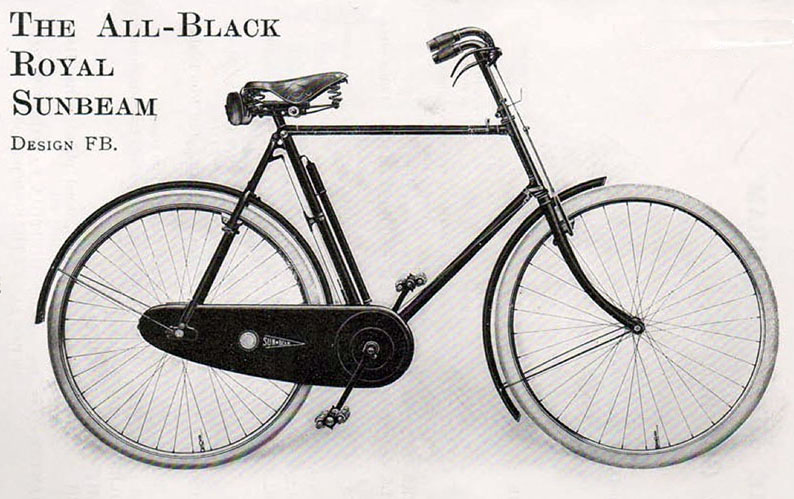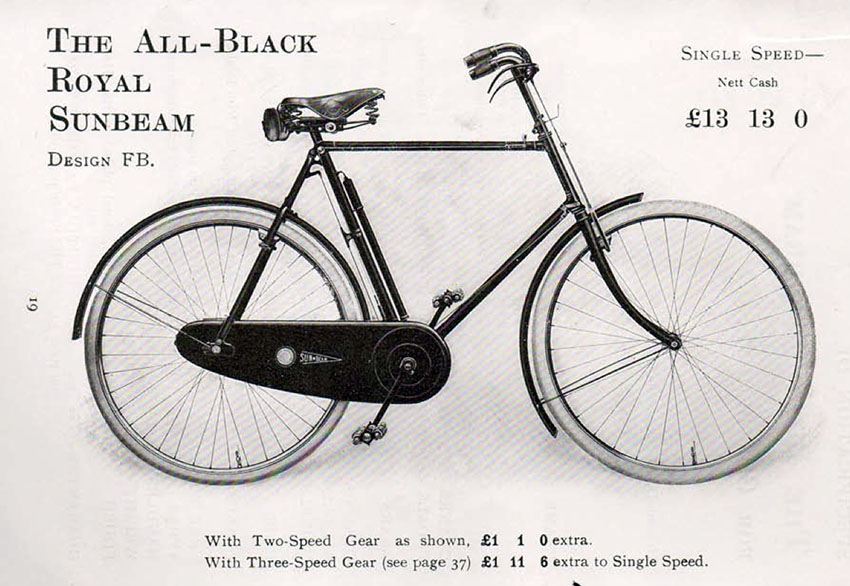
The Changing Body, to be published next month by Cambridge University Press, concludes that there is a clear link between height and earnings. Some 200 years ago, differences in height between working-class and upper-class people were “really substantial”, said Sir Roderick Floud, a leading economic historian and one of the leaders of the team behind the book.
In the late 18th and early 19th century, a comparison between boys from the slums of London and boys at Sandhurst Royal Military Academy – the children of peers, clergymen, naval and army officers – showed that between 90 to 95 per cent of working-class boys were shorter than upper-class children. *
– The Independent newspaper
In Victorian times in Britain, rich people had a better diet, and were considerably taller than poor people. British bicycles were expensive so were purchased only by the upper classes. So they were made in tall sizes, no doubt to maintain their exclusivity. The most common frame sizes were 24″ and 26″, suitable for a 33″ and 35″ inner leg respectively. The bicycles made by the quality manufacturers held their value on the secondhand market too. With a shortage of petrol-driven transport during World War One, many more people used bicycles, particularly those who worked in factories to support the war effort. It was not until the 1920s that bicycles were used extensively for commuting to work, and prices from nearly all manufacturers dropped accordingly. Except Sunbeam. Their machines remained exclusive.
Because of the company’s high manufacturing standards and higher sales prices, Sunbeams were invariably well cared for by their owners, much as a Rolls Royce would be cosseted whereas cheap functional cars were more often driven into the ground. Families of the original owners cared for the Sunbeams too; so now, a century later, more Sunbeams from the World War One era have survived in good original condition than any other make of bicycle. The tall framed example featured here is no exception.

1920 All-Black Royal Sunbeam for Gentlemen
2-speed Epicyclic Gear
Brooks ‘B90’ saddle
28″ Frame
28″ Wheels
Frame No 137193
(Now sold)

This beautiful All-black Royal Sunbeam for Gentlemen has a rare 28″ frame, suitable for a rider with an inner leg measurement around 37″.
It is in superb unrestored original condition, and ready to ride.




1915 SUNBEAM CATALOGUE















‘BAD TEETH NO BAR: A HISTORY OF MILITARY BICYCLES IN THE GREAT WAR’
As you can see in the extract below, from chapter 40 of the new book ‘BAD TEETH NO BAR: A HISTORY OF MILITARY BICYCLES IN THE GREAT WAR’ which is out next month (author Colin Kirsch, published by Unicorn, ISBN 978-1-910500-52-1), in their advertisements, Sunbeam capitalised on an unfortunate event that occurred immediately post-war – the influenza epidemic of 1918/1919 actually killed more people than the World War itself. It was spread by the close proximity of commuters on buses and trains. Demand for bicycles outstripped supply with some cycle manufacturers as they adapted once more to peacetime production.













* http://www.independent.co.uk/news/science/upper-classes-really-do-look-down-their-noses-at-the-rest-of-us-2254133.html






























